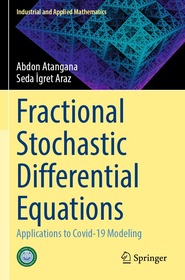
Fractional Stochastic Differential Equations
Applications to Covid-19 Modeling
Series: Industrial and Applied Mathematics;
- Publisher's listprice EUR 160.49
-
66 563 Ft (63 393 Ft + 5% VAT)
The price is estimated because at the time of ordering we do not know what conversion rates will apply to HUF / product currency when the book arrives. In case HUF is weaker, the price increases slightly, in case HUF is stronger, the price goes lower slightly.
- Discount 20% (cc. 13 313 Ft off)
- Discounted price 53 250 Ft (50 714 Ft + 5% VAT)
- Discount is valid until: 31 December 2025
Subcribe now and take benefit of a favourable price.
Subscribe
66 563 Ft

Availability
printed on demand
Why don't you give exact delivery time?
Delivery time is estimated on our previous experiences. We give estimations only, because we order from outside Hungary, and the delivery time mainly depends on how quickly the publisher supplies the book. Faster or slower deliveries both happen, but we do our best to supply as quickly as possible.
Product details:
- Edition number 1st ed. 2022
- Publisher Springer Nature Singapore
- Date of Publication 23 April 2023
- Number of Volumes 1 pieces, Book
- ISBN 9789811907319
- Binding Paperback
- See also 9789811907289
- No. of pages540 pages
- Size 235x155 mm
- Weight 842 g
- Language English
- Illustrations XV, 540 p. 162 illus. in color. Illustrations, color 456
Categories
Long description:
This book provides a thorough conversation on the underpinnings of Covid-19 spread modelling by using stochastics nonlocal differential and integral operators with singular and non-singular kernels. The book presents the dynamic of Covid-19 spread behaviour worldwide. It is noticed that the spread dynamic followed process with nonlocal behaviours which resemble power law, fading memory, crossover and stochastic behaviours. Fractional stochastic differential equations are therefore used to model spread behaviours in different parts of the worlds. The content coverage includes brief history of Covid-19 spread worldwide from December 2019 to September 2021, followed by statistical analysis of collected data for infected, death and recovery classes.
More




